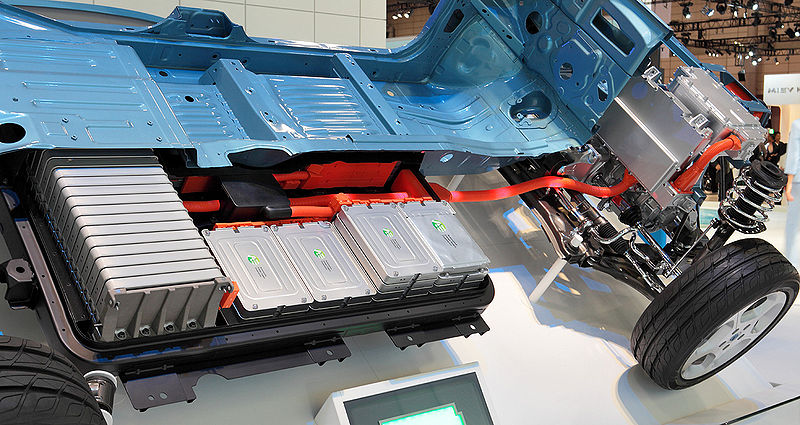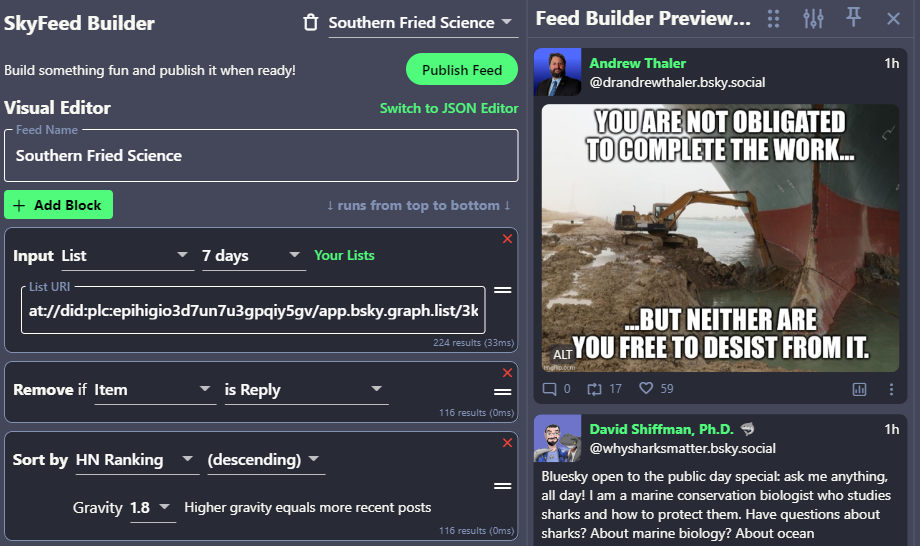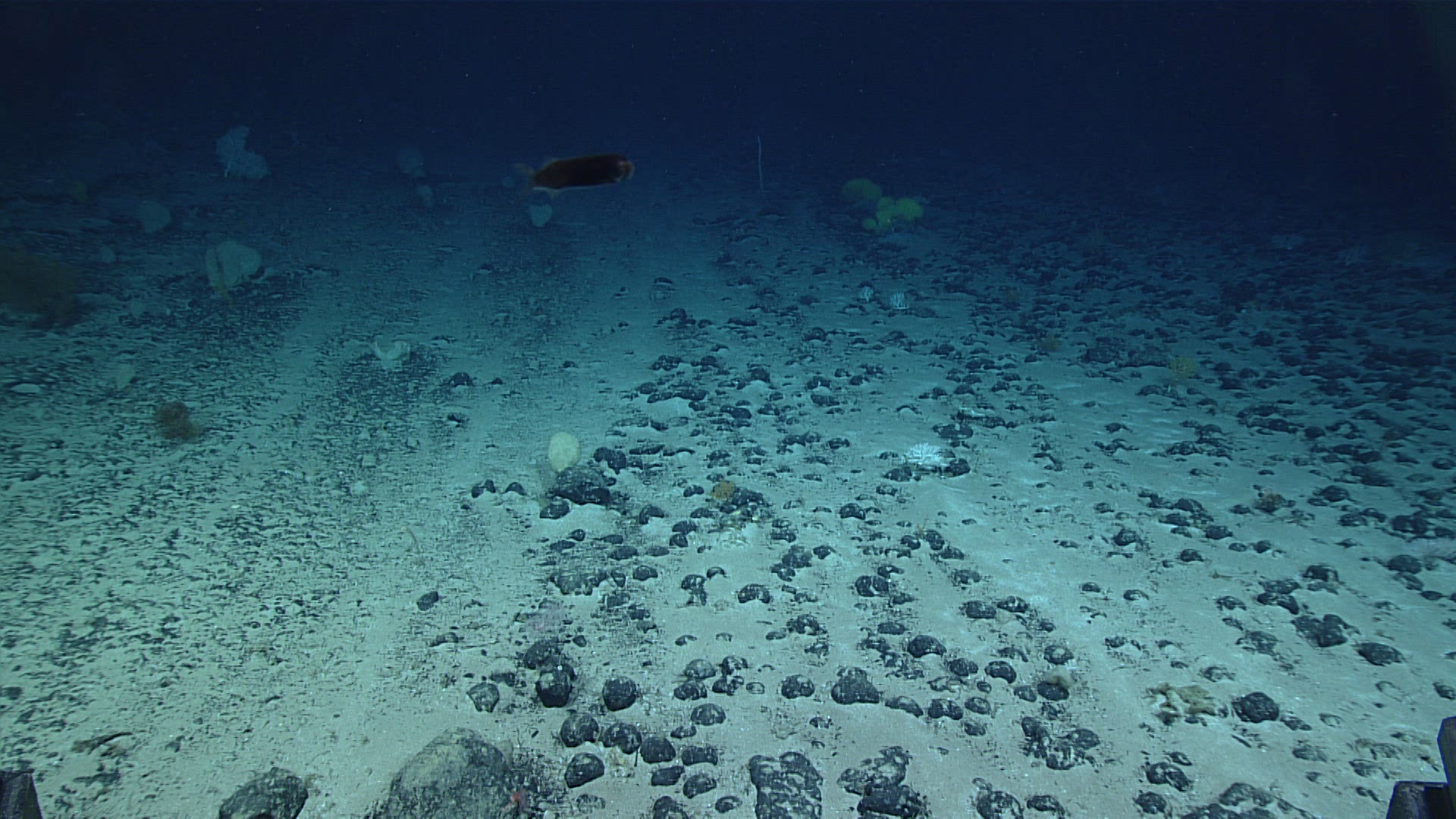As in-person negotiations on the future of exploitation in the deep ocean resume this week in Kingston Jamaica, we reflect back on the last two years of development as reported on our sister site, the Deep-sea Mining Observer. This article first appeared on August 26, 2021.
Deep-sea mining is frequently framed as a race to the seafloor. While that is not technically true–deep-sea mining has, in fact, been incredibly slow to develop as an industry, with nearly half a century of technological innovation, diplomatic negotiation, and environmental exploration under its belt without producing a single ounce of commercial ore–the deep-sea mining industry is in a race against the one major technological innovation that could upend the industry’s claim to being a foundational technology for the renewable resource transition.
The race is not to the bottom of the sea before fossil fuel consumption creates runaway global warming (with a 30-year-horizon, deep-sea mining is well positioned to facilitate the long-term transition to renewables, but is unlikely to make a major impact in the resource demands needed to meat the IPCC 2030 targets). The race is to reach commercial production before the evolving state of battery technology renders the majority of seabed resources superfluous. Battery chemistry is the x-factor that will shape the long-term prospects for the viability of deep-sea mining.
The Lithium-Ion batteries currently favored by electric vehicle manufacturers depend on electrodes made of cobalt and nickel, along with other rare metals, as well as lithium in both the electrodes and as an electrolyte in the form of lithium salt dissolved in an organic solvent. The composition of polymetallic nodules so closely matches the demands of current generation battery chemistry that The Metals Company CEO Gerard Barron often opens his presentations by holding up a nodule from the Clarion-Clipperton Zone and declaring that ‘this is an electric car battery’.
Though not the most pressing metal to be derived from deep-sea mining, Lithium remains one of the most essential elements in modern batteries, both small and large. Lithium for batteries is primarily produced from two major ore deposits: one in Australia and another in Chile. It also occurs in commercially viable quantities in polymetallic nodules. But a new, and potentially enormous source of lithium has emerged from one of the most polluted places on the planet, the Salton Sea.
The Salton Sea is a once dry lakebed that was refilled to promote agriculture in Southern California by diverting a portion of the Colorado River. Things did not go according to plan, and in the century since the lake was flooded, it has accumulated massive agricultural runoff and, coupled with the steady shrinking of the lake in the last two decades, has concentrated vast tracts of toxic sludge. The Salton Sea has been described as “the biggest environmental disaster in California’s history.”
The Salton Sea also contains lithium. Locked in hot, salty brine beneath the lakebed, this lithium deposit could produce as much as 600,000 tons per year, nearly ten times the amount of lithium the world produces annually, today. General Motors has partnered with Controlled Thermal Resources to not only mine the brine for lithium, but use the water to produce geothermal energy, simultaneously.
“CTR’s lithium resource at the Salton Sea in California is one of the largest known lithium brine resources in North America,” Controlled Thermal Resources said in a press release. “CTR’s closed-loop, direct lithium extraction process utilizes renewable power and steam—significantly reducing the time to produce battery-grade lithium products and eliminating the need for overseas processing. CTR’s operations will have a minimal physical footprint and a near-zero carbon footprint. The brine, after lithium extraction, is returned to the geothermal reservoir deep within the earth.”
Controlled Thermal Resources expects to deliver lithium for GM by 2024.
Both Toyota and Ford have also recently made major investments into alternative battery technologies. Toyota, a late-comer to electric vehicle production, has been teasing a solid state battery for its first generation of all-electric vehicles for several years. In addition to charging much faster than conventional lithium-ion batteries, solid state batteries require fewer metals in their production. Ford, which made big waves this summer when it announced an all-electric version of the F-150 pick-up truck (the most popular vehicle in the United States) at a price point that falls below all but the most spartan gas-powered F-150s, is also investing in new battery technologies. The storied automaker announced the creation of the Ford Ion Park research and development center, where it will invest in new and promising battery-related technologies, not just novel battery chemistries, but every component of the life cycle, from the mining of virgin ores to the recycling of spent cells.
A recent supply chain report from the Biden Administration predicts that the increasing global demand for battery metals, including cobalt, lithium, and nickel, can be met by current terrestrial production coupled with advances in metal recycling, urban mining, and evolving battery chemistry, precluding the imminent need to develop new prospects on the seafloor, noting that “Significant quantities of strategic and critical materials may be found on the seabed, but the industry to extract these resources remains nascent, given both technical challenges of mining in the marine environment and the potential for significant environmental harm,” and observing that “seabed resources may provide a significant future source of strategic and critical materials.”
The promise of low-resource-demand next generation batteries is still largely hypothetical. For the moment, deep-sea mining remains a promising pathway to producing the metals necessary to meet demands based on current battery technologies. And even if new cobalt and nickel-free batteries enter into commercial production, adoption of new battery chemistries is a slow process. The giga factories to power the next decade of electric vehicles have already been built and retooling for a new chemistry is a major and costly undertaking.
The most exciting new batteries are still largely the stuff of science fiction, consigned to laboratories and years away from commercial realization. But, of course, the deep-sea mining industry is no stranger to witnessing just how quickly the stuff of science fiction can become the state of the art.
Featured Image: Battery Pack of a Nissan Leaf. Photo via Wikimedia Commons.


